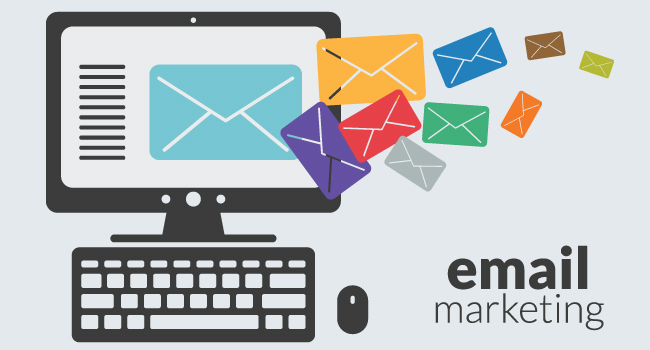What Is an Email Marketing Campaign?
An email marketing campaign refers to a targeted and personalized marketing strategy that involves sending a series of emails to a group of subscribers to promote a product, service, or brand. These emails are typically sent to individuals who have willingly subscribed to a company’s email list or have given permission to receive marketing emails. The primary goal of an email marketing campaign is to build a relationship with the audience and encourage them to take a specific action, such as making a purchase, signing up for a service, or visiting a website.

Types of Email Campaigns
There are several types of email marketing campaigns that businesses can utilize to achieve their marketing goals. Let’s take a closer look at some common types:
1. Newsletter Email Marketing Campaigns
Newsletter campaigns are a powerful way to keep subscribers engaged and informed about the latest news, updates, and industry trends related to a brand. Newsletters can include various types of content, such as articles, blog posts, videos, and images. They can also be customized to target specific subscriber segments based on interests or behaviors.
2. Promotional Email Marketing Campaigns
Promotional emails are designed to promote a sale, discount, or special offer to subscribers. These emails can be highly effective in generating immediate revenue and encouraging customer loyalty. Promotional emails can also be personalized based on subscriber behavior, such as past purchases or website browsing history.
3. Onboarding Email Marketing Campaigns
Onboarding emails are sent to new subscribers, welcoming them to the brand and introducing them to its products or services. These emails can set the tone for the subscriber’s relationship with the brand and provide a valuable opportunity to make a positive first impression. Welcome emails can also include incentives, such as discounts or freebies, to encourage subscribers to make their first purchase.
4. Abandoned Cart Email Marketing Campaigns
Abandoned cart emails are sent to individuals who have left items in their online shopping cart without completing the purchase. These emails aim to remind potential customers of the items left behind and provide incentives, such as discounts or free shipping, to encourage them to complete the transaction.
5. Re-engagement Email Marketing Campaigns
Re-engagement emails are sent to inactive subscribers in an effort to re-engage them with the brand. These emails can include incentives, such as discounts or exclusive content, to encourage the subscriber to take action. Re-engagement emails can also be used to gather feedback from subscribers on why they have been inactive and how the brand can improve their experience.
Email Marketing Campaign Examples
Let’s explore some successful email marketing campaign examples to gain inspiration and insight into how different businesses have leveraged email marketing effectively:
Dropbox
Dropbox’s referral program is a prime example of how email marketing campaigns can be used to grow a business. Dropbox offered its existing users free storage space if they referred their friends to use Dropbox. The referral program was promoted through email campaigns, with personalized referral links making it easy for users to refer their friends. This successful campaign generated over 4 million new users for Dropbox.
TheSkimm
TheSkimm, a daily newsletter known for its conversational and engaging tone, has successfully grown its subscriber base to over 7 million. TheSkimm’s email marketing campaigns focus on engaging its audience and generating revenue through affiliate partnerships and sponsored content. The newsletter’s personalized and targeted approach, combined with data-driven optimization, has contributed to its success.
Charity: Water
Charity: Water, a nonprofit organization, effectively utilizes email marketing to promote its campaigns and drive donations. The organization’s email campaigns are centered around storytelling and emotional appeals, with personalized emails fostering a personal connection with the audience. Transparency, accountability, and trust-building are also crucial elements in Charity: Water’s successful email marketing campaigns.
“Charity: Water’s email marketing campaigns are highly emotional and engaging, using storytelling to create a personal connection with its audience. The organization’s focus on transparency and accountability helps build trust and encourages donations.”
Step-by-Step Guide to Create an Email Marketing Campaign
Now that we’ve explored the different types of email marketing campaigns and reviewed successful examples, let’s dive into a step-by-step guide on how to create and run a successful email marketing campaign.
Step 1: Build a Targeted Email List
The foundation of any successful email marketing campaign is a targeted email list. To build this list, you need to convert your website visitors into subscribers. Create attractive opt-in forms that capture visitors’ attention and encourage them to sign up. Experiment with different types of opt-in forms, such as welcome gates, lightbox popups, and exit-intent popups, to maximize conversions.
“Exit-intent popups, which appear when people are about to leave your site, are particularly effective in converting abandoning visitors into subscribers and customers. This smart technology can significantly increase your conversions.”
Once you’ve captured subscribers’ information, it’s crucial to segment your list based on demographics, location, interests, and engagement levels. This segmentation allows you to send more targeted and personalized email campaigns, increasing the chances of success.
Step 2: Define Your Goals
Before launching your email marketing campaign, it’s essential to define your goals. What do you want to achieve with your campaign? Common goals include welcoming new subscribers, boosting engagement, nurturing existing subscribers, re-engaging inactive subscribers, and segmenting your audience for more targeted campaigns.
“Setting clear and measurable goals is crucial for running a successful email marketing campaign. This helps you stay focused and track the effectiveness of your efforts.”
Step 3: Understand Email Types
To create effective email marketing campaigns, it’s important to understand the different types of emails you can send. There are three key email types: promotional emails, relational emails, and transactional emails.
Promotional emails focus on offers, sales, and self-promotion. Relational emails provide subscribers with promised content, such as newsletters or free gifts. Transactional emails are triggered by subscribers’ actions and relate to an action they’ve taken on your site, such as signup confirmations or order acknowledgments.
“Understanding the different types of emails allows you to choose the most appropriate type for your campaign and ensures your emails deliver value to subscribers.”
Step 4: Know Your Audience
To create email campaigns that resonate with your audience, it’s crucial to know who they are. If you’ve been running email marketing campaigns for a while, you likely have data on your subscribers’ demographics, location, and interests. If you’re just starting, make educated guesses based on data from Google Analytics and social media profiles.
“Gathering data on your audience helps you tailor your email marketing campaigns to their preferences and interests. This personalization increases engagement and improves the chances of success.”
Step 5: Utilize Technology
Leveraging the right email marketing tools and technology can significantly enhance the effectiveness of your campaigns. Look for an email marketing service that offers easy campaign creation and automation, integrates with your existing software, provides audience segmentation capabilities, and offers in-depth analytics on campaign performance.
“Choosing the right email marketing service and using its features effectively can streamline your campaign creation process, improve targeting, and provide valuable insights for optimization.”
Step 6: Plan Emails and Follow-ups
Once you’ve defined your goals, identified your audience, and selected the right tools, it’s time to plan your email marketing campaign. Consider the frequency of your emails, the type of content you’ll include, and the main action you want subscribers to take. A well-planned email series can guide subscribers through a customer journey and increase conversion rates.
“Planning your emails and follow-ups ensures a cohesive and engaging campaign. Make sure your emails are timely, relevant, interesting, and valuable to your subscribers.”
Step 7: Craft Engaging Subject Lines
The subject line of your email plays a crucial role in determining whether recipients open and engage with your message. Craft compelling subject lines that clearly communicate the value subscribers will receive by opening your email. Keep subject lines concise, personalized, and free of spam trigger wo
“Subject lines are the first impression recipients have of your email. Make them attention-grabbing and enticing to improve open rates and overall engagement.”
Step 8: Write Compelling Email Copy
The content of your emails is instrumental in capturing and maintaining subscribers’ attention. Craft engaging email copy that resonates with your audience, tells a story, and provides value. Personalize emails using subscribers’ names and consider segmenting your audience to deliver more targeted content.
“Your email copy should be concise, compelling, and focused on providing value. Use storytelling and personalization to create a connection with your subscribers.”
Step 9: Design Engaging Emails
The design of your emails is crucial for capturing and retaining subscribers’ attention. Use responsive email templates that adapt to different devices, ensuring a seamless reading experience across desktops, tablets, and smartphones. Balance text and images, as many recipients disable images, and use alt tags to describe images for accessibility.
“An engaging email design enhances the overall user experience and reinforces your brand identity. Choose responsive templates and optimize your emails for readability and accessibility.”
Step 10: Test and Track Performance
To ensure the success and continuous improvement of your email marketing campaigns, it’s crucial to test different elements and track performance metrics. Conduct A/B tests on design, copy, subject lines, and calls to action to identify what resonates best with your audience. Monitor email analytics, including open rates, click-through rates, unsubscribes, and forwards, to gain insights into campaign performance.
“Testing and tracking performance allows you to refine your email marketing campaigns, optimize results, and deliver better experiences to your subscribers.”
Conclusion
Running a successful email marketing campaign requires careful planning, strategic execution, and continuous optimization. By following the step-by-step guide outlined in this article, you’ll be equipped with the knowledge and tools to create engaging and effective email campaigns. Remember to build a targeted email list, define your goals, understand different email types, know your audience, utilize technology, plan your emails, craft compelling subject lines and copy, design engaging emails, and test and track performance. With dedication and persistence, you can achieve remarkable results and drive meaningful engagement with your audience through email marketing.




No comments! Be the first commenter?